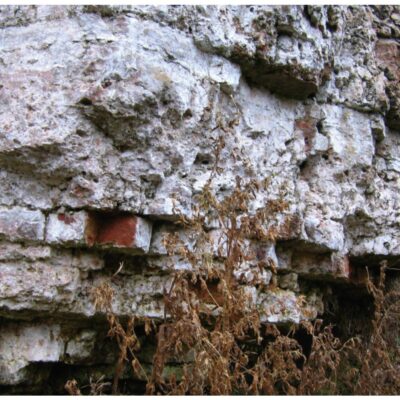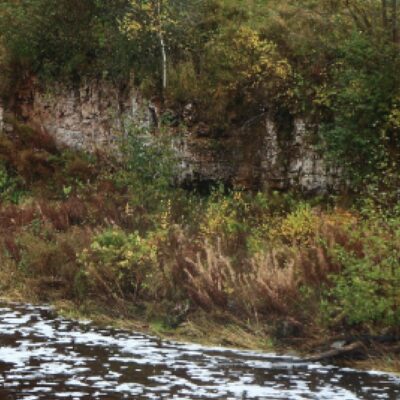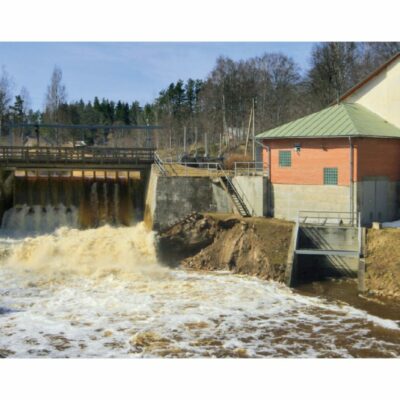The picturesqe 10 m high Grūbe dolomite outcrop is located below the Grūbe hydroelectric power station sluice on the right bank of the riwer Vaidava. It reveals dolomites belonging to the upper part of the Devonian period and resembling yellowy brownish brick wall. Insome parts of the dolomite rock it is possible to see cavities with tiny mineral calcite crystals and fossils of the ancient sea creatures.
Since 1977 the Grūbe dolomite rock outcrop has been a national geological and geomorphological natural monument. It is included in the European Union protectec habitats – 8210 (the EU significance biotope code ) calcareous rocky slopes.
The total lenght of the rock outcrop is 115 m and its maximum height is 4.5 m. The highest rock outcrop is in int northern part. There are also several spring outflows, and one of them has been specialy formed to have an easy access to the spring water. In winter the ronning water makes marvellous icefalls.
The natural two-level waterfall is 12 m wide and its total height is 4 m. The first watermill was already built in the 19th century. Not to interrupt the flow of the riwer, the steps of the waterfallhave been covered with concrete. In the beginning of the 20th century the Grūbe cardboard plant with a sawmill was built instead of the watermill. Until World War II ir was the biggest manufacturing centre in the nearestē area which employed about 80 people. In 1944 when the german army withdrew, the buildings were blown up. In 1951. the power station was renoved, and and it existed there till 1972.
In 1999.the local entrepeneurs renoved the Grūbe power station installing one of most modern turbine with remote control. To have the best use of the water flow the second turbine was installed recently. The power station operates in the flow regime with a little changes of the water level.
At the power station the old turbine machines are exposed. Next to it there is the tourism amd recreration place “Grūbe”, the holiday house “Melderi” and the fish farm “Krāces”.



